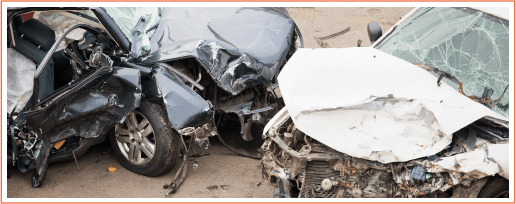
312-981-0409
161 N. Clark Street, Suite 1700, Chicago, IL 60601
Serving Clients Across 7 Illinois Locations
Different Types of E. Coli Explained

Escherichia coli is a gram-negative, rod-shaped bacterium that belongs to the Enterobacteriaceae family. First discovered in 1885 by German pediatrician and bacteriologist Theodor Escherich, E. coli has become one of the most extensively studied microorganisms due to its abundance and diverse characteristics. Inhabiting various environments, including the human and animal digestive systems, some strains of E. coli are harmless and even beneficial. However, others can lead to severe illness and pose significant public health concerns. Continue reading to learn about the five types of pathogenic E. coli variants.
1. Enterohemorrhagic E. Coli (EHEC)
Enterohemorrhagic (EHEC) strains, such as E. coli O157:H7 and Shiga-toxin-producing E. coli, are highly recognized due to their low infectious dose and transmission through contaminated food, especially meat and unpasteurized beverages. These Escherichia coli strains primarily target the colon, leading to symptoms like non-bloody diarrhea caused by Shiga-toxin production and AE lesions. Severe cases can result in Hemolytic Uremic Syndrome (HUS), a life-threatening condition.
EHEC infections are prevalent in developed nations, where contaminated meat is processed quickly and distributed across the country. Thus, strict food safety measures and public awareness are essential to prevent the spread of these dangerous strains and safeguard public health.
2. Enteroaggregative E. Coli (EAEC)
Usually affecting children in developing nations, Enteroaggregative E. coli (EAEC) strains can stick themselves to intestinal cells and form a biofilm, resulting in prolonged watery and mucoid diarrhea. While the exact mechanisms remain incompletely understood and inflammation and lesions are generally absent, ongoing research aims to gain deeper insights and devise specific treatments for EAEC infections.
3. Enterotoxigenic E. Coli (ETEC)
ETEC strain, known for its ability to produce a heat-labile toxin (LT), heat-stable toxin (ST), or both, can be identified using various laboratory techniques such as gene probes, tissue culturing, or immunochemical tests. This strain is associated with two major clinical syndromes: traveler's diarrhea and weanling diarrhea in children in developing regions.
Upon infection, the ETEC organisms colonize the surface of the small bowel mucosa and release their enterotoxins, resulting in a short incubation period of 14 to 50 hours. The diarrhea caused by ETEC is typically watery and does not usually contain blood or mucus, and fever may not always be present. Studies have indicated that contaminated food and water contaminated with feces are the most common sources of ETEC infection.
4. Enteroinvasive E. Coli (EIEC)
Enteroinvasive (EIEC) strains represent a group of pathogens that bear striking similarities to Shigella in terms of their disease-causing mechanisms and the distressing symptoms they elicit, such as dysentery.
These E. coli strains can break and enter the intestinal walls, where they swiftly multiply, giving rise to a cascade of detrimental effects such as cell death, severe inflammation, and the development of painful ulcers. While EIEC infections predominantly afflict children residing in developing regions, sporadic outbreaks have been observed in industrialized nations due to consuming contaminated water or food.
5. Enteropathogenic E. Coli (EPEC)
Enteropathogenic Escherichia coli (EPEC) is a strain of E. coli that is uncommon in industrialized countries but remains a major cause of infant diarrhea in developing nations. It is primarily spread through fecal-oral transmission and contaminated water. The infectious dosage and immunity of EPEC are difficult to determine, but it has been found on objects near infected children, indicating a low infectious dose for infants.
Unlike other E. coli strains, EPEC does not produce toxins but forms micro-colonies on the intestinal cell wall, resulting in the attachment and effacing (AE) lesion, disrupting intestinal cells and causing diarrhea. Although the precise cause of watery diarrhea is unknown, it is likely linked to bacterial invasion and disruption of intestinal absorption. EPEC is less likely to cause traveler's diarrhea, highlighting its distinctive characteristics and public health implications in regions with poor sanitation and hygiene practices.
E. Coli Transmission and Prevention
Escherichia Coli strains can be transmitted in several ways, such as the consumption of contaminated food and water, coming into physical contact with an infected person or animal, and observing improper hygiene practices. The good news, however, is that you can prevent the risk of an E. coli infection by following these tips:
● Thorough Handwashing: Always wash your hands with soap and water for at least 20 seconds before eating, after using the restroom, handling raw meat or vegetables, and after contact with animals. If soap and water are unavailable, use an alcohol-based hand sanitizer.
● Cook meat Thoroughly: When preparing meat, ensure it is cooked to a safe internal temperature. Use a food thermometer to check that ground beef reaches at least 160°F (71°C) and poultry reaches 165°F (74°C).
● Avoid Eating Unpasteurized Products: Consume only pasteurized dairy products, as unpasteurized items may carry harmful bacteria like E. coli.
● Practice Food Safety: Avoid cross-contamination by using separate cutting boards for raw meat and vegetables. Clean kitchen surfaces, utensils, and hands after handling raw meat. Also, thoroughly wash all fruits and vegetables under running water before eating or cooking them.
● Drink Safe Water: If you're unsure about the safety of the water supply, opt for bottled or boiled water. Avoid consuming untreated water from lakes or rivers.
If you have symptoms of E. coli infection, such as diarrhea, vomiting, or abdominal pain, avoid preparing food for others and limit close contact with people, especially in settings like schools or childcare facilities.
Sue for E. Coli Food Poisoning with Newland & Newland LLP
The consequences of E. coli food poisoning can be far-reaching, leading to not only physical discomfort but also resulting in costly medical bills, missed days of employment, and even emotional distress like depression. If you find yourself in this unfortunate situation, you don't have to face it alone. Specializing in E. coli cases, Newland & Newland LLP is committed to helping you find your rights. Our team of experienced food poisoning lawyers is here to support you in seeking the compensation you deserve for the hardships you've endured.
Don't hesitate to reach out for a free consultation in Arlington Heights, Crystal Lake, Chicago, Libertyville, or Joliet. Hire a Newland & Newland LLP food poisoning attorney and take the first step towards getting the help and justice you deserve.
-

Foreclosure and Bankruptcy
Visit Website -

Real Estate and Estate Planning
Visit Website -

Personal Injury
Visit Website

 Spanish
Spanish










